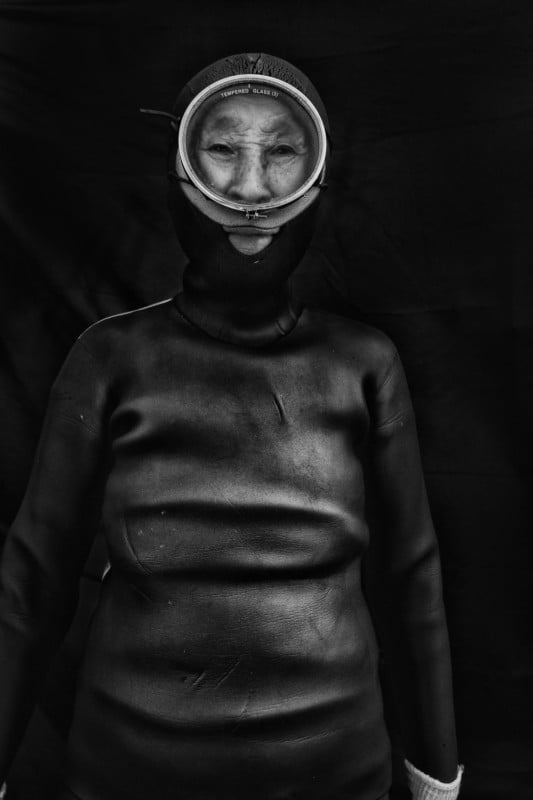Photographer Captures Freediving Grandmas Who Delve Deep into the Ocean

A photographer captured the portraits of South Korea’s legendary “Grandma Divers,” elderly women who freedive deep into the ocean for seafood.
Alain Schroeder tells PetaPixel that it was not easy to capture the women’s portraits but as the stunning images show, it was well worth it.
“The first time I saw them coming out of the water in a protected bay with a basalt (volcanic) rock in the distance. I shot with a telephoto lens and the background was totally black,” he says.
“With the wetsuit, that black-on-black was visually interesting. I decided to buy a piece of black cloth and shoot the divers in front of it wherever I could.”
![]()
![]()
![]()
After deciding that he would embark upon the project, he initially had bad luck because of a tropical storm preventing the women from diving.
“With only a few days left, I decided to buy a piece of black cloth and shoot the divers in front of it wherever I could,” he says.
“It was raining quite hard so the ladies were waiting to dive. I was lucky to be able to take advantage of that moment.”
![]()
![]()
![]()
Haenyeo
The women are known locally as haenyeo, female divers in the Korean province of Jeju who harvest mollusks, seaweed, and other sea life from the ocean.
“Wearing thin rubber suits and old-fashioned goggles, this aging group of women are celebrated as a national treasure and inscribed on the UNESCO list of Intangible Cultural Heritage,” explains Schroeder.
“The overwhelming majority of Haenyeo are over the age of 60. Most of the ladies I shot were in their late 60s, or early 70s. They are freediving to 10-20 meters, holding their breath for up to two full minutes.”
![]()
![]()
![]()
Schroeder says that haenyeo is a difficult and risky lifestyle that’s rapidly disappearing as younger women pursue other careers.
“Most of the divers told me they did not encourage their children to dive. Most of the women have been diving for 30-40 years or even longer,” he says.
“Although freediving for seafood has existed for many centuries in Jeju, the practice was taken over by women in the 18th century transforming the region into a semi-matriarchal society.”
However, numbers have dwindled since the 1970s as less arduous working opportunities have presented themselves in the area.
“There are still about 4,000 ladies who make a living collecting delicacies from the sea,” adds Schroeder.
![]()
![]()
![]()
Black and White
Schroeder shot the project on a Fujifilm Xpro2 with an 18mm lens. He chose black and white because of their neoprene suit and he used a black backdrop that he attached to one of their diving houses.
“I chose a location that would remain shaded if there was a break in the clouds as I did not want any sun in the pictures,” he says.
“I used a wide-angle lens to go close with a more dramatic effect, and I used low-angle shots to make the women appear stronger in the frame. The grey light was perfect to set the mood for the pictures.”
![]()
![]()
Schroeder says the women wear their tough experiences on their wrinkled faces.
“It is what they have been doing their whole lives and they are proud of their traditions,” he says.
“The women were difficult to engage even though I had a local fixer who spoke Korean and their dialect.
“Many of them were indifferent. To keep them standing in front of the backdrop long enough to get the shots, I asked them to demonstrate their daily gestures of preparation and at the same time respond to questions about their lives.”
After the shoot, Schroeder bought some of their seafood and ate it.
“I think they have too much pressure from locals (there are almost no western tourists) who want to shoot selfies with them and at a certain point, it is too much,” he says.
“The work they do is really hard and most simply prefer to be left alone.”
More of Schroeder’s work can be found on his Instagram and website.
Image credits: All photos by Alain Schroeder.